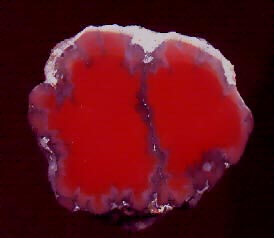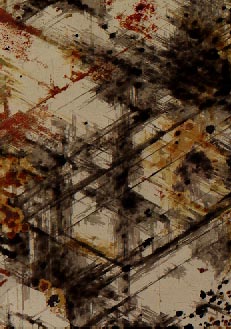- There are a wide range of options one can use to begin a mineral collection. These can range from buying specimens (or a mine) to field
collecting and trading. This is a brief introduction to rockhounding and mineral collecting.
The properties of minerals can be used to identify specimens. Hardness
is one important property of a
mineral.
- To identify the common rock types one is most likely to find, use the Rock
Key by Don Peck.
- To identify common minerals, use the physical properties of your specimens
with the Mineral Key by Alan Plante,
Don Peck and David Von Bargen.
- The mineralogical literature contains a large amount of information on where one can find mineral specimens. There is an extensive listing of resources for the topographical mineralogy for the United States.
It consists of lists the publications by
various state geological surveys, articles published in the "hobby" literature, and resources available
on the web by state.
- A searchable table of contents for Rocks &
Minerals from 1926-1977 will help you find articles in this
"hobby" magazine.
- Classic mineral localities have produced a large number of minerals which are
often new to science (type localities).
- A virtual field trip to the Keweenaw peninsula
of Michigan. This area has produced the finest specimens of native copper
for collectors and lapidary material such as Lake Superior agates and
datolite.
- A sampling of articles from the 85 years of archives of the The American Mineralogist .
It includes articles such as Peter C. Rickwood's "The
largest crystals", a survey of the largest mineral crystals for 39 mineral species. The
subject matter includes locality articles, history of mineralogy and
mineralogists, and properties of minerals. This area is
currently under construction with "new" postings of articles on a periodic basis.
Table of Contents for The American
Mineralogist.
- The official rocks, minerals, gems, and fossils for the various states have been enacted into law by
the lobbying of schoolchildren and Gem & Mineral Societies. Canadian provincial minerals
and gems
- Be sure to read how mineral specimens come from a pegmatite to your
collections (from the pegmatite interest group - Cryo
Genie reports).
- Answers to Frequently Asked Questions. What does it take to become a
mineral?
- Minerals which are economically important.
This site is under construction. If you have any suggestions or
questions about content (except for pages where authorship is listed) for
the Collector's Corner pages please contact David
Von Bargen.
This page was last updated on
06/15/04.
|


